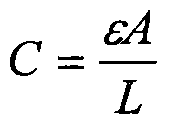Electrolyte
A technology of electrolyte and capacitor, applied in the field of electrolyte, can solve the problem of supercapacitor not operating alone
- Summary
- Abstract
- Description
- Claims
- Application Information
AI Technical Summary
Problems solved by technology
Method used
Image
Examples
example 1
[0087] Example 1: Benzonitrile Additive
[0088] According to the applicant's previously published patent specifications (see, for example, PCT / AU98 / 00406 (WO98 / 054739), PCT / AU99 / 00278 (WO99 / 053510), PCT / AU99 / 00780 (WO00 / 016352), PCT / AU99 / 01081 (WO00 / 034964), PCT / AU00 / 00836 (WO01 / 004920), PCT / AU01 / 00553 (WO01 / 089058)) to prepare supercapacitors.
[0089] An electrode sheet was formed on a 22 μm thick aluminum foil with a carbon coating including activated carbon, a binder, and conductive carbon. Two 29 cm 2 Carbon-coated electrodes of about 6 μm thickness are used to fabricate the battery. The entire half is then folded to create a flat stack of electrodes, with bare aluminum tabs extending from each electrode. Then, the stack was partially enclosed in a laminated pack with an EAA heat-sealing layer to fabricate a supercapacitor cell. This packaged dry cell was then dried in an inert atmosphere. Simultaneously, still under an inert atmosphere, each stack was saturated wi...
example 2
[0102] Example 2: Cinnamonitrile Additive
[0103] Supercapacitor cells were prepared in a manner similar to that described above, except that cinnamonitrile (3-phenylacrylonitrile) was used instead of benzonitrile, and a 25 μm, high-porosity PTFE separator was used. The results of the ESR rise rate and capacitance loss rate calculated from the lifetime data between 400h and 600h are shown in Table 2 below:
[0104] Table 2: Average ESR and capacitance at different points during lifetime testing at 70°C and 2.3V, with associated rates of change (values in parentheses are standard deviations), illustrating the benefit of adding cinnamonitrile.
[0105]
[0106] From the above results it can be seen that the use of cinnamonitrile as a stabilizing additive provides better results (than in the absence of cinnamonitrile) in terms of capacitance loss over the lifetime of the supercapacitor. Although the observed rate of ESR rise is not suppressed by high concentrations of cinn...
PUM
 Login to View More
Login to View More Abstract
Description
Claims
Application Information
 Login to View More
Login to View More - R&D
- Intellectual Property
- Life Sciences
- Materials
- Tech Scout
- Unparalleled Data Quality
- Higher Quality Content
- 60% Fewer Hallucinations
Browse by: Latest US Patents, China's latest patents, Technical Efficacy Thesaurus, Application Domain, Technology Topic, Popular Technical Reports.
© 2025 PatSnap. All rights reserved.Legal|Privacy policy|Modern Slavery Act Transparency Statement|Sitemap|About US| Contact US: help@patsnap.com



